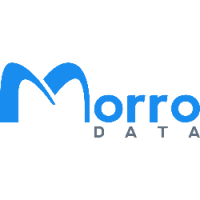Starting Your NAS Replacement Journey: Transitioning to Cloud Storage
Migrate from your traditional NAS network & server to Cloud Storage
Enterprise Network-attached storage (NAS) systems have long served as pillars of data management, providing centralized storage and access. However, as technology advances and data volumes move up, many businesses confront the necessity of replacing aging NAS systems with more robust and scalable cloud storage solutions. In this blog, we’ll delve into the process of NAS replacement, offering insights and best practices to facilitate a seamless transition.
Assessing Your Current NAS System
Before delving into NAS replacement, conducting a thorough assessment of your existing NAS infrastructure is necessary. Evaluate factors such as storage capacity, performance, data accessibility, data redundancy, and security to pinpoint any shortcomings or areas for improvement. Consider the age of your current system, its compatibility with modern applications and technologies, and whether it can effectively meet your business’s present and future needs.
With your requirements in mind, research and explore available NAS replacement options in the market, including emerging cloud-based alternatives like CloudNAS. Weigh the pros and cons of each based on factors such as cost, scalability, flexibility, and management complexity.
In our previous blog article, we discussed key considerations for replacing file servers, including data migration, user familiarity, backup and recovery, compatibility, scalability, and the advantages of transitioning to a cloud-based file system.
Simple NAS Cloud Storage
CloudNAS, offered by Morro Data, combines fast file access and SMB interface with global file services and cloud object storage, delivering efficient and affordable file services. Designed for simplicity, CloudNAS consolidates and virtualizes storage management, offering centralized file views and real-time file sync capabilities.
Migration Planning
When choosing a new data storage solution, it’s important to plan carefully for a smooth transition. Create a detailed migration plan that includes steps, timelines, and resources needed. Consider things like how data will be transferred, whether it works with existing software, and ways to avoid downtime. Also, make sure to check data integrity during the process.
CloudNAS offers the easiest way to transfer data from your current NAS to the new system. Its automatic process and incremental approach ensure seamless data transfer. While data is being transferred, users can continue working on the current NAS, and once the transfer is complete, everyone can transition to the new CloudNAS file system. This eliminates downtime and the concerns for IT admins or teams regarding the transition process.
Post-Migration Maintenance
After completing the migration to your new solution, continuous optimization and maintenance are crucial for maximizing performance and efficiency. The IT architecture of CloudNAS is straightforward and requires minimal upkeep. Simply monitor system metrics regularly and adhere to best practices for data management, security, and backup. Stay updated on software upgrades and emerging technologies to ensure your Global File System remains secure, reliable, and up-to-date in the long term.
